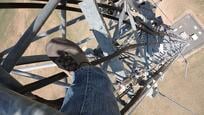What do you do when you need to provide Internet connectivity for one of the largest live music and film festivals in the world? You build out a wireless backhaul network using point to point microwave!

At the 2011 SXSW (South by Southwest) Film and Music Festival tens of thousands of people from around the world swarmed to Austin, TX to experience the latest in film and see the over 2000 bands that played live at over 200 venues. The SXSW event merges film, music and technology all in one place. Technology is playing an even larger role at SXSW. It was the place that Microsoft launched their new IE9 platform.
Austin was filled with members of the media reporting on the events and who's making news in the film and music industry. Bloggers are found on every corner writing about who's playing and getting signed to large record labels. Live concerts were broadcasted live over the Internet. Bands like the Foo Fighters, Duran Duran, Blue October, Kid Rock, Snoop Dogg, Bob Schneider, Crystal Bowersox, and many others showed up without much warning to perform.
In years past, one of the biggest complaints was the lack of broadband connectivity, that's if you could get connected at all. With so many people in such a concentrated area many of the cellular networks get overloaded and come to a crawl. Add to the fact that there is now a 1 to 1 or even a 2 to 1 ratio of wi-fi enabled devices to people. Laptops, iPhones, iPads, and all the other smartphone devices were present everywhere. This year SXSW wanted to make sure that they could enhance the attendees experience by bringing wireless bandwidth to the people.
SXSW could get a large (GigE) Internet pipe to their corporate office but couldn't get connectivity to the major facilities by the local telecommunication providers. With months of planning At&t, Time Warner, Verizon, etc. failed provide a temporary wireless solution. So they turned to Alpha Omega Wireless to solve the problem. We were able to build out a high bandwidth, point to point wireless backhaul network from their facility to some major venues around Austin. Even though the fiber providers couldn't do it with months of advanced notice the wireless installation of SXSW's wireless broadband was deployed in days.
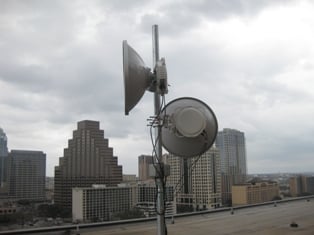 Because of the bandwidth demand we used full duplex microwave radios, such as SAF Lumina licensed microwave and 24GHz unlicensed wireless ethernet bridges, BridgeWave 60GHz wireless links, and a few unlicensed wireless bridges for specific events. Most venues were able to get 100Mbps full duplex wireless connectivity.
Because of the bandwidth demand we used full duplex microwave radios, such as SAF Lumina licensed microwave and 24GHz unlicensed wireless ethernet bridges, BridgeWave 60GHz wireless links, and a few unlicensed wireless bridges for specific events. Most venues were able to get 100Mbps full duplex wireless connectivity.
Wireless backhaul used for the core network distribution and last mile wireless used to provide bandwidth to special event venues gave SXSW a lot of flexibility and the ability to provide wi-fi to attendees. Once the event was over the equipment was removed as if it was never there.





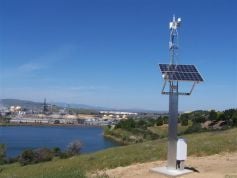
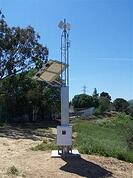
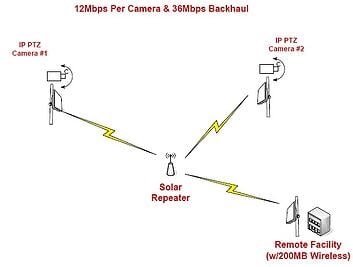
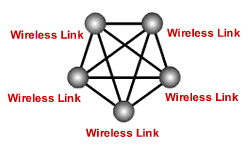
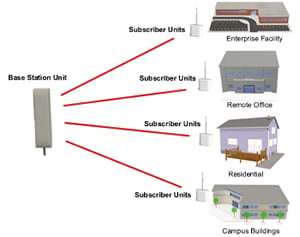 Point to multipoint wireless Ethernet bridge systems are made up of a Base Station Unit (BSU or AP) that can communicate with multiple Subscriber Units (SU's). Many systems can handle over 100 plus SU's per BSU. In most cases the BSU's provide a sector antenna beam pattern (typical is 60 degree, with some systems allowing external antenna configurations for expanding to 90 and 120 degree sector antennas). Multiple BSU's can be installed to create a 360 degree sector (like a typical cell site configuration).
Point to multipoint wireless Ethernet bridge systems are made up of a Base Station Unit (BSU or AP) that can communicate with multiple Subscriber Units (SU's). Many systems can handle over 100 plus SU's per BSU. In most cases the BSU's provide a sector antenna beam pattern (typical is 60 degree, with some systems allowing external antenna configurations for expanding to 90 and 120 degree sector antennas). Multiple BSU's can be installed to create a 360 degree sector (like a typical cell site configuration). 


